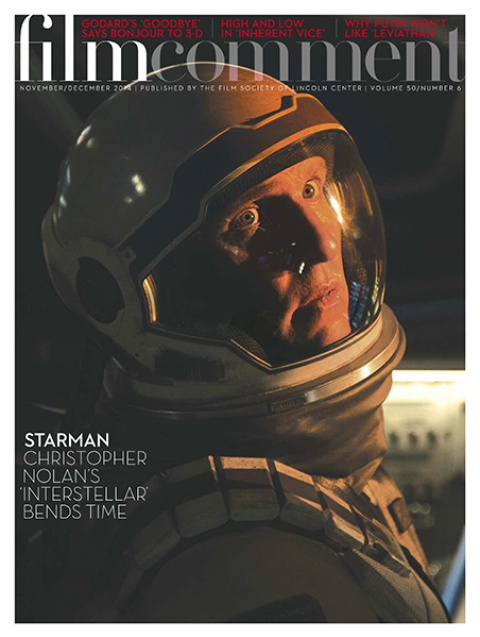
When you think of the golden olden days, you don’t tend to think of white shoes—certainly not filthy, nasty white-leather bucks that stop at scabby bare ankles, propped up on a faded red footrest. That’s what the POV tracking shot lands on after taking in the interior of a hazy opium den and the pubic thatch of an approaching Chinese concubine. The intertitle says “1900: New York City,” but even with the sepia-filtered lighting, there’s an immediate sense of period-pic cognitive dissonance. (Did they mean to say “2014: Bushwick”?) The person who owns those ratty boots, one Dr. John Thackery, steps into a turn-of-the-century Manhattan, accompanied not by the sound of a tinkling player piano but by a burbling Cliff Martinez synth score straight out of an Eighties John Carpenter movie. Then our protagonist, played by a disheveled Clive Owen decked out in a well-tailored suit, leaves the room and gets into a horse and buggy—and shoots up cocaine between his toes.
We are exactly two minutes into The Knick, Steven Soderbergh’s 10-episode series for a rebranded no-really-we-show-more-than-just-softcore Cinemax, and we are already being served notice: fuck your Sweet Adeline nostalgia about the early 20th century. Viewers are entering an era in which the streets are paved with horseshit and drunkards’ teeth, and modernity comes one primitive surgical procedure at a time. Never mind that it’s set in your great-grandfather’s era; this is not your father’s medical procedural. Things will not be pretty. There will be blood. Gallons and gallons of it.
It’s also quickly apparent that Thackery is a graduate of the Difficult Men school of TV antiheroes, the kind of protagonist who’s damned good at his job yet personally flawed, i.e., arrogant, guilt-ridden, and fond of a toot. Thackery is our guide through both the wild, wild East that was Gotham circa 1900 and the halls of the Knickerbocker Hospital, where the art of surgery is only beginning to move past its Paleolithic-sawbones phase. In these corridors and offices and operating theaters, we’ll meet the usual cross-section of characters from hospital and Old New York dramas: smitten nurses, young apprentices, liberal social workers, penny-ante gangsters, Irish lugs, and nuns, as well as one Harvard-trained African-American surgeon. Hang around for this first season, and you’ll also get cameos from Thomas Edison and Typhoid Mary, man-versus-bag-of-rats brawling, casual racism, not-so-casual racism, riots in the streets, father issues, father figures, class envy, Cronenbergian body horror, and a graphic example of what syphilis does to the human face. That’s entertainment.

Much ink has been spilled over the filmmaker’s first post-retirement foray into serialized television, and how Soderbergh’s entry into the showrunning realm is the latest (and arguably greatest) argument for an auteurist takeover of the small screen. (He not only directed all 10 episodes, but also shot and edited them under his usual noms de production Peter Andrews and Mary Ann Bernard.) But what’s most interesting about The Knick is how it balances the modest small-screen aims of its writers, Jack Amiel and Michael Begler, and the incredible big-canvas ambition of the director. While they are penning a fan-fiction season of ER as written by E.L. Doctorow, Soderbergh is attempting the cinematic equivalent of a Dos Passos novel, painting a portrait of a society in flux via virtuoso flourishes and long, jazzy jags.
The tension between these two storytelling poles is what makes The Knick both a schizoid wonder and an example of how a major filmmaker can almost accidentally make Great TV, if not successful Golden Age Prestige TV, out of hash. Yes, there are clichés, historical anomalies, and anachronisms (was “full disclosure” part of fin de siècle parlance?), and also, despite André Holland’s nuanced performance, there’s a black character who, when not stuck in the role of quip machine, exists basically to highlight one character’s progressive values or another’s prejudices. The actor and the character deserve better.
There’s also the sort of experimentation and singular formalism that’s dotted Soderbergh’s later movies, a fluid style that can seem voyeuristically intimate or meaningfully remote (or, in the case of a virtuoso fight scene shot from the punch-drunk point of view of a back-alley puglist, both at once). But these efforts undeniably lift this show within blood-spurting proximity to the director’s best big-screen work. More importantly, he’s transfusing fresh blood into both medical melodramas and historical-hindsight narratives in a way that’s not killing the patient. Soderbergh leaves his characters in various out-of-the-frying-pan states, the kind that no Bayer Aspirin products—not even the one in the season’s final shot—can cure. He also leaves viewers ready to walk a mile in those dingy white shoes for as many times as he cares to lay out the rough road before us.








